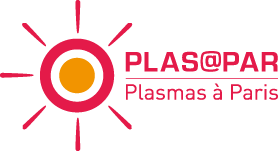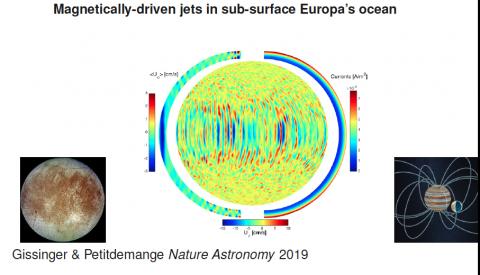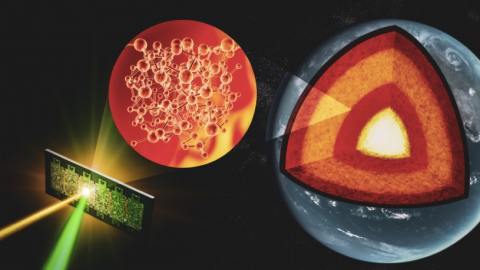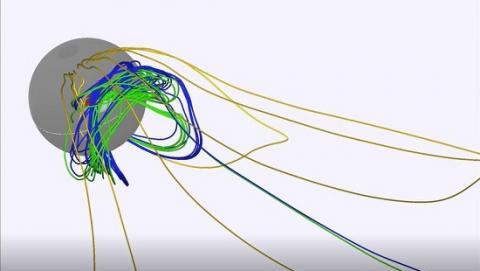
Who am I ? n°7
Meet a member of the PLAS@PAR Federation.
The riddle
- I am rather numerical and observer.
- I study space plasmas.
- If I were a plasma, I would like to be the Sun.
- If plasmas were an artistical work, it would be an impressionistic painting that captures our starlight so well.
- If plasmas were a color, it would be a shade of green.
- If plasmas were a sport, it would be a bicycle race.
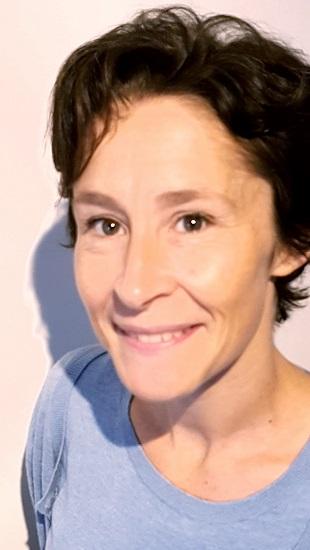
The interview
Hi Sophie Masson, you are now unmasked! Can you tell us a little more about your background?
I obtained my thesis at the Paris Observatory on solar flares and high energy particles. I then did a post-doctorate at the Goddard Space Flight Center near Washington DC, USA. I returned to France in 2015 to take up my post as Assistant Astronomer at the Paris Observatory. In addition to my research activity, I have a teaching service and an observation service. For the latter, I am responsible for the data obtained with solar radio instruments from the Nancay radio astronomy station.
Can you say a little more about your current research in plasma physics?
My main research theme is the study of the dynamics of the solar atmosphere, the corona. The solar corona is a collisional plasma where the magnetic field is the main driver of its activity. I am developing digital MHD models to model the various active phenomena of the solar corona, such as solar flares, the main vectors of interaction of Sun-Earth relations, and the transition between the open and closed magnetic field of the corona, which can be a key element of slow solar wind generation. I combine my models with Ultraviolet observations of the solar corona in order to be able to understand in detail the dynamics of the solar corona.
Figure 1: Eruption of a coronal mass ejection (CME) modeled with the ARMS (Adaptive Refinement MHD Solver) code in the solar wind. During its propagation in the interplanetary magnetic field, the magnetic field of the initially closed CME reconnects with the open magnetic field towards interplanetary space (see blue lines).
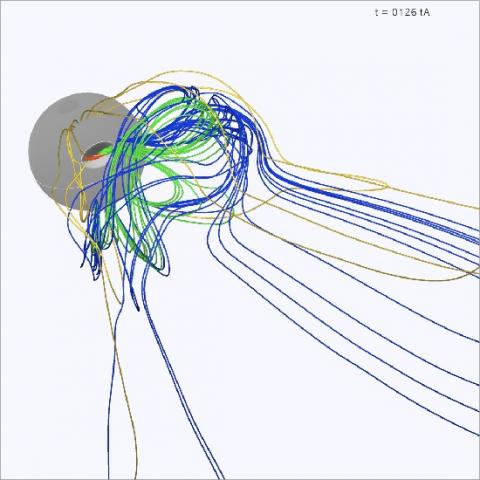
Figure 2: The transition corona. Left and top right: Modeling with ARMS to study the reconnection between the closed field and the open field of the solar corona. The colored lines represent the magnetic field lines and the vertical gray scale sections represent the density of electric current. Bottom right: UV observation obtained with the Solar Dynamics Observatory satellite of the modeled structure.
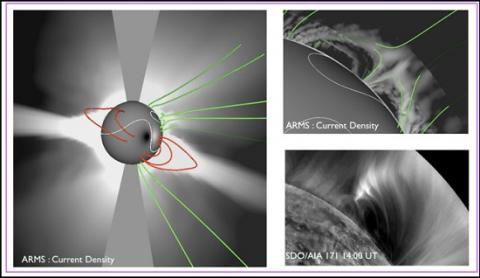
Can you share with us the references of your latest publications?
-
S. Masson, S.K. Antiochos and R.C. DeVore, Escape of Flare-accelerated Particules in Solar Eruptive events, 2019, ApJ,Volume 884, Issue 2, article id. 143, pp. 15
-
Barczynski, K.; Aulanier, G.; Masson, S.; Wheatland, M., Flare Reconnection-driven Magnetic Field and Lorentz Force Variations at the Sun’s Surface, 2019, ApJ, Volume 877, Issue 2, article id. 67, 16 pp.
-
Ruan, G.; Schmieder, B.; Masson, S.; Mein, P. ; Mein, N.; Aulanier, G.; Chen, Y.;Bidirectional Reconnection Outflows in an Active Region, 2019 ApJ, Volume 883, Issue 1, article id. 52, pp. 17
Can you tell us a little more about the teaching actions you lead?
I teach a course on solar flare activity at the Master of Astrophysics at the Paris Observatory. I am also co-responsible for the University of Light on the Universe Diploma at the Paris Observatory. This distance university diploma offers thematic courses from level Licence 1 to Master 1. Its strong point is the personalized follow-up of students by an astrophysicist researcher teacher. I also work in schools as part of class sponsorship. I particularly appreciate the sponsorship of kindergarten classes, these little ones put my skills as an extension worker to the test!
What site (s) do you work on?
I work on 3 sites: Mainly in Jussieu, the Paris Observatory for teaching and the radio-astronomy station in Nançay (Cher, France) for my observation service.
What is your role within the PLAS@PAR community (management, federation council, outreach activities, educational actions, ...)?
Participation in scientific activities via the response to PLAS@PAR Calls for Tender.
Do you carry out actions with the general public on an ad hoc or regular basis, if so, can you explain?
In the past, I have participated in events such as the Science Festival or the Solstice Festival, mainly by presenting solar observation instruments on the Meudon Observatory site. Little activity since 2020 due to the current situation.
If PLAS@PAR faces a challenge for the next 5 years, what do you think it is?
Pursue its unifying role for the plasma community. Collaborations are essential to the development of research, to the provision of quality education and to address cross-disciplinary and disciplinary issues.
One last word ?
Thank you Charlotte for this interview. To continue as much as possible!
Thank you very much Sophie Masson! Who's next ?
